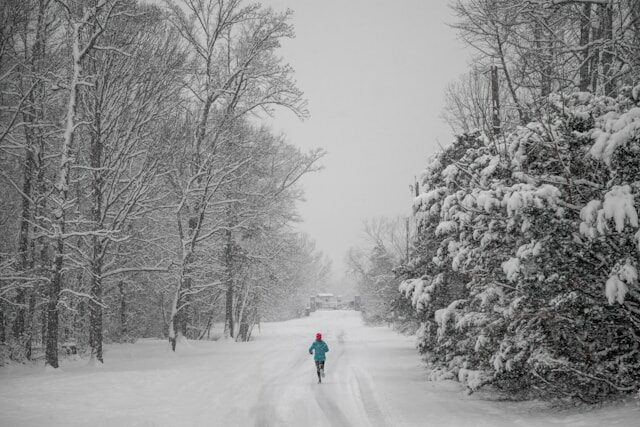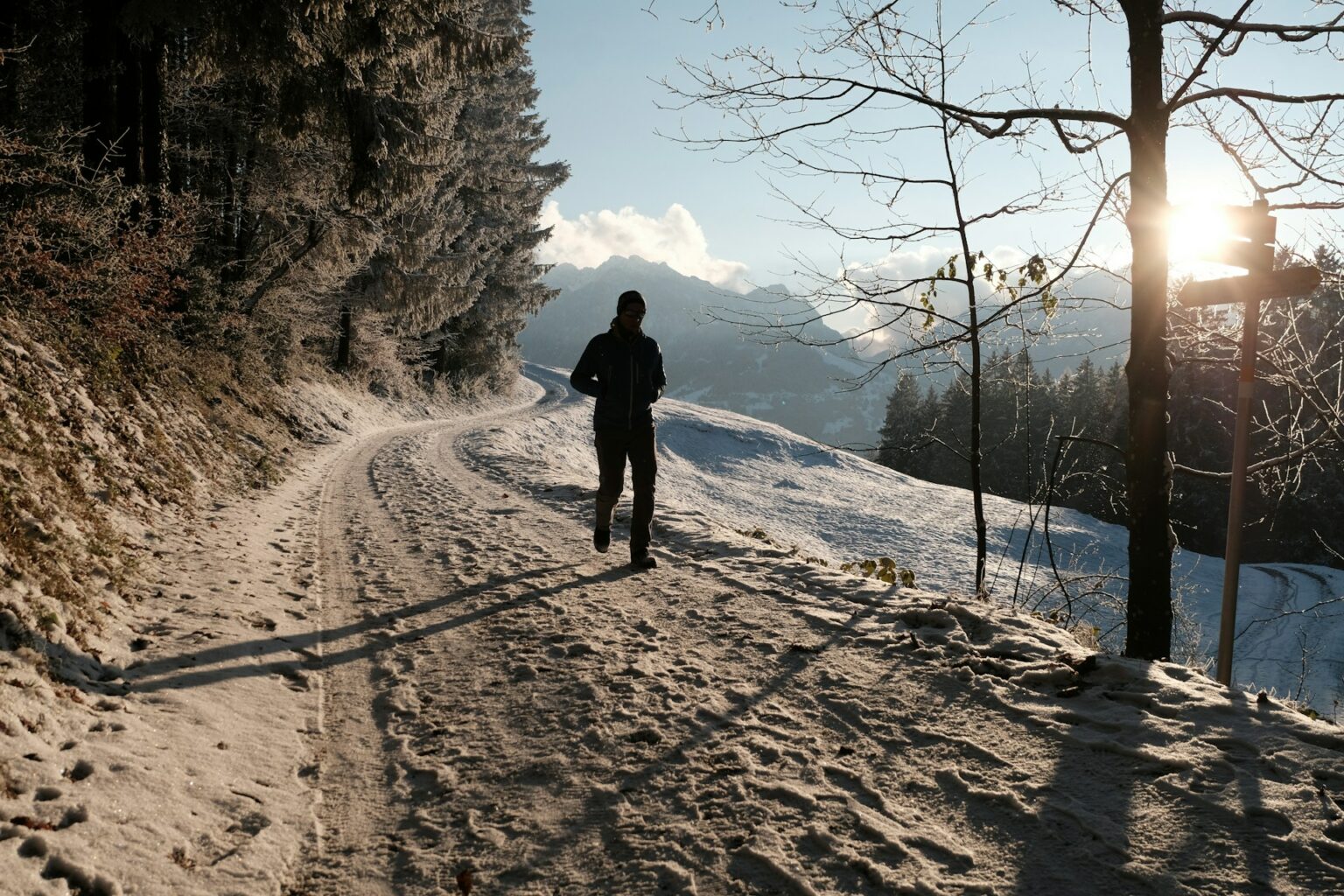Le white trail, This is the magic of the mountains in winter: snow crunching under your feet, icy air whipping your face, immaculate landscapes... and a good dose of adrenalin. But before you can enjoy this frosty adventure, you need to be properly equipped. Because running in the snow isn't just about putting on your summer trainers and a pair of gloves: every detail counts, from the technical T-shirt to the headlamp.
Visit the complete guide of the’trail equipment to face the cold, Snow and ice in complete safety.
Clothes: the 3-layer system, your best ally against the cold
This is the golden rule for winter riders: three layers, not one more, not one less. This system keeps you warm and dry and regulates perspiration, even when the thermometer dips below zero.
- 1st layer - breathable Glued to the skin, it wicks away perspiration and keeps your body dry. Choose a long-sleeved technical t-shirt or a base layer in merino wool, which keeps you warm even when damp. Forget cotton: it retains moisture and will turn you into an ice cube.
- 2nd layer - insulating : It's your thermal barrier. A fine fleece or a synthetic micro-doudoune will do the trick. It traps heat while allowing moisture to escape.
- 3rd layer - protective The outer shell against the elements: a waterproof or windproof jacket (Gore-Tex, Pertex Shield, DryVent...). When you're climbing, you can open it or put it away, but in windy or snowy conditions, it quickly becomes indispensable.
For the bottom, opt for a thermal tights or softshell trousers. The fabric must remain stretchy so as not to restrict movement.
???? Tip: remember to put on a dry layer as soon as you arrive to avoid a post-exercise chill.

Shoes & socks: the key is grip and warmth
Your feet are your engine. And in white trail running, they're also the first area to suffer from the cold. So your choice of footwear is crucial.
Opt for trail shoes suitable for winter with membrane Gore-Tex or eVent, breathable but waterproof. The sole must be aggressive: deep crampons, good grip on hard snow and ice. Some brands such as Salomon, La Sportiva or Scarpa offer “Winter Edition” models.
Complete your equipment with :
- Technical socks Out with the cotton, in with the merino wool ! It regulates temperature and stays warm even when wet. Upright models limit snow infiltration.
- Removable gaiters and crampons The mini gaiters prevent snow from infiltrating, a must for powdery trails. On icy terrain, add running spikes (Yaktrax, Nortec, Camp...): they attach in a flash and can save you from a nasty slip.
???? Tip: wear half a size up to accommodate thick socks and maintain blood circulation.
Essential accessories: small details, big comfort
Good equipment doesn't stop at clothes and shoes. Visit accessories often make the difference between a magical outing and a polar ordeal.
- Gloves and hat : The extremities cool down first: choose Nordic skiing or winter running gloves, lined and breathable. A hat or a windbreaker headband is compulsory. Lightweight mittens will not suffice at -10°C.
- Headlamp : In winter, night falls quickly. A 300 to 600 lumen lamp with a good range is essential for night-time or foggy trails. Think about a rear red light if you're on the road.
- Hydration and safety The cold makes you less thirsty, but dehydration is just around the corner. Take a hydration bag with an insulated flange. And always keep a survival blanket at the bottom of the bag - it can save lives in the event of injury or cold.
- Trail poles On deep snow, they stabilise your stride and take the pressure off your thighs when climbing. Choose lightweight, foldable carbon or aluminium models.
FAQ - The questions we all ask ourselves before a white trail
???? Should I change my shoe size for winter? Yes, take half a size bigger thick socks and blood circulation need space.
???? Are compression sleeves useful? Absolutely. They add a thin insulating layer, promote venous return and protect against branches or frost.
???? What is your budget? Expect to pay around :
- 120 à 180 € for a good pair of winter boots,
- 80 à 150 € for a technical jacket,
- 20 à 40 € for high-performance socks. It's a long-term investment: good equipment will serve you well for several seasons.

